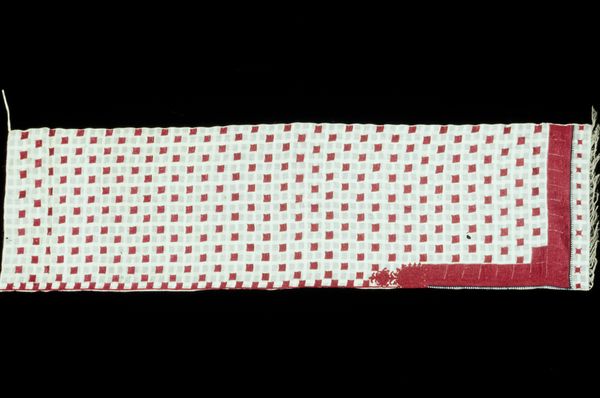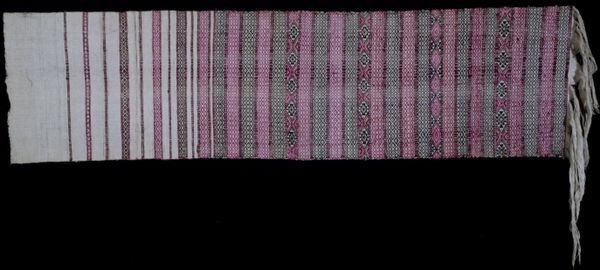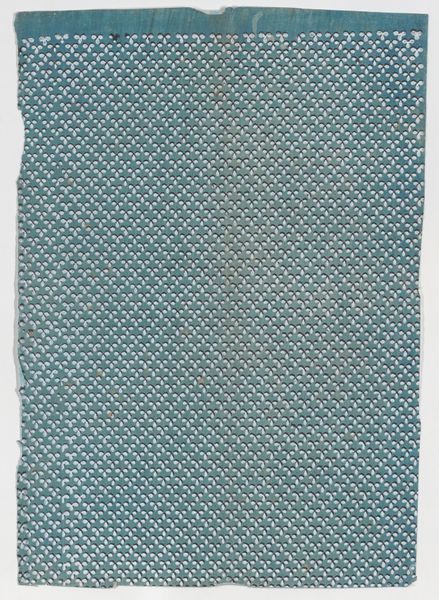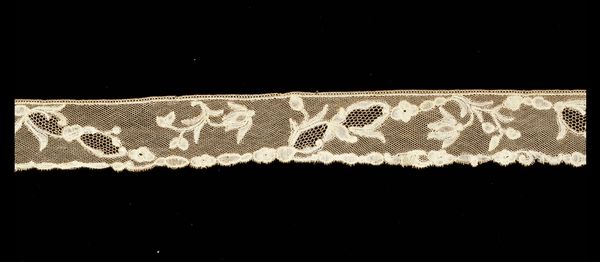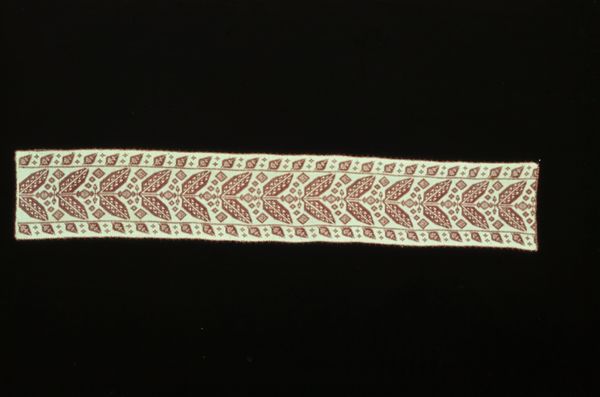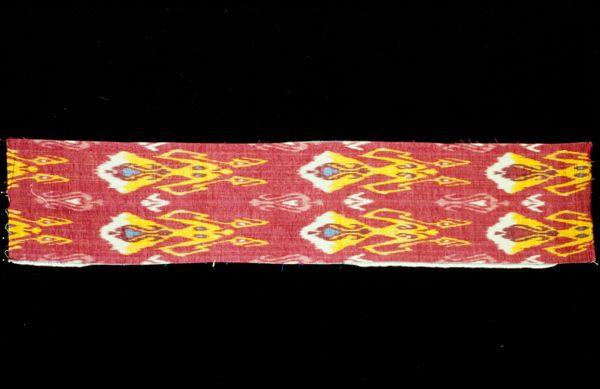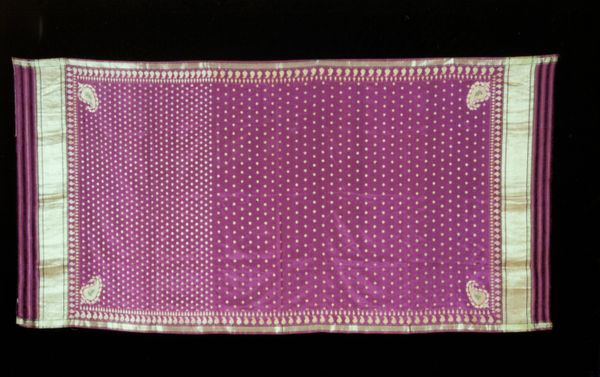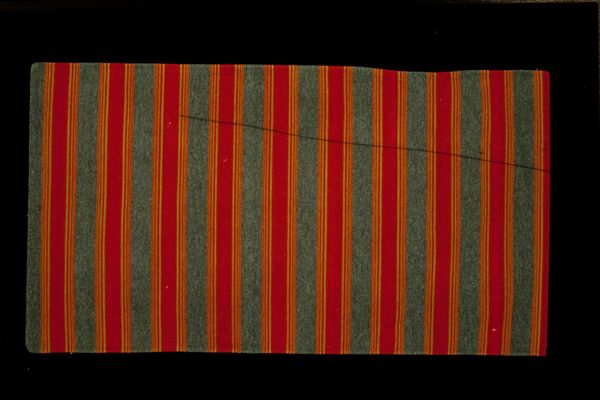
fibre-art, silk, textile, cotton
#
fibre-art
#
silk
#
textile
#
geometric
#
cotton
Dimensions: 22 7/8 x 3 3/8 in. (58.1 x 8.57 cm) (including tassels)
Copyright: Public Domain
Curator: What strikes you first about this object? For me, it's like seeing a forgotten ember, still holding a spark of vibrant color against time. Editor: That's a beautiful way to put it. It screams of something powerful but also fragile. Like holding history in the palm of your hand. We're looking at what's simply titled "Bag," made sometime in the 19th century, now residing at the Minneapolis Institute of Art. Its construction involves textile, silk, fibre-art, and cotton. Curator: The materials whisper of careful labor and intentional creation, a real presence there. Do you get that feeling too? Editor: Absolutely. Thinking about who created it, the anonymous maker – or more likely makers – immediately prompts so many questions about their lives, their position within their community, who they were making this for, and what cultural traditions informed this. The geometric patterns feel deeply symbolic, don't you think? Curator: Geometric and grounding somehow, aren’t they? Those bold yellows against the strong red... it feels alive. Bags, throughout history, are about carrying something essential, about movement, about stories told on the go. I wonder what this held. Editor: Precisely, objects are active participants within these historical narratives, right? Beyond the surface beauty, consider that the construction and ornamentation of an everyday item like a bag, particularly using valuable materials like silk and employing skilled fibre-art techniques, can reveal a complex hierarchy, possibly power structures and elaborate trade routes from that specific period and social setting. Curator: So it’s a carrier, literally and figuratively. Do you ever find yourself hoping objects like this could suddenly spill out their secrets? Editor: Oh, constantly. In so many cases of historical cultural preservation it can act almost as a means to make a subtle political point to draw out complex dynamics between colonizer and colonized. You could argue that the simple preservation of indigenous craft becomes a deeply resonant form of resistance and resilience, a defiant act of maintaining cultural memory in a context that actively tried to erase it. Curator: Absolutely. Thank you for pulling that depth out of the object's context. Editor: Thanks for dreaming aloud about its contents, real or imagined.
Comments
No comments
Be the first to comment and join the conversation on the ultimate creative platform.
